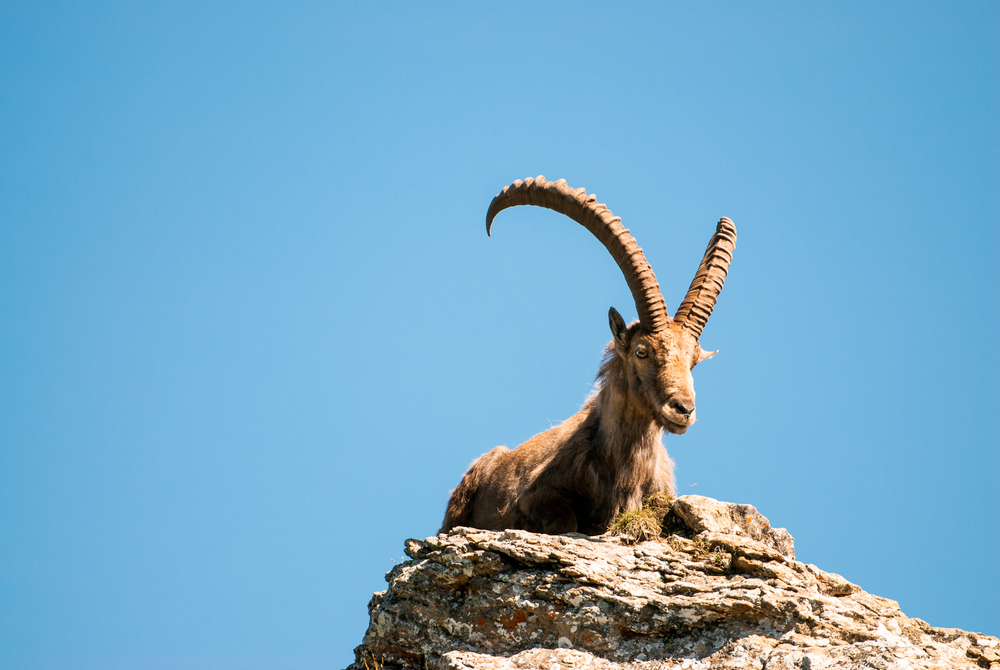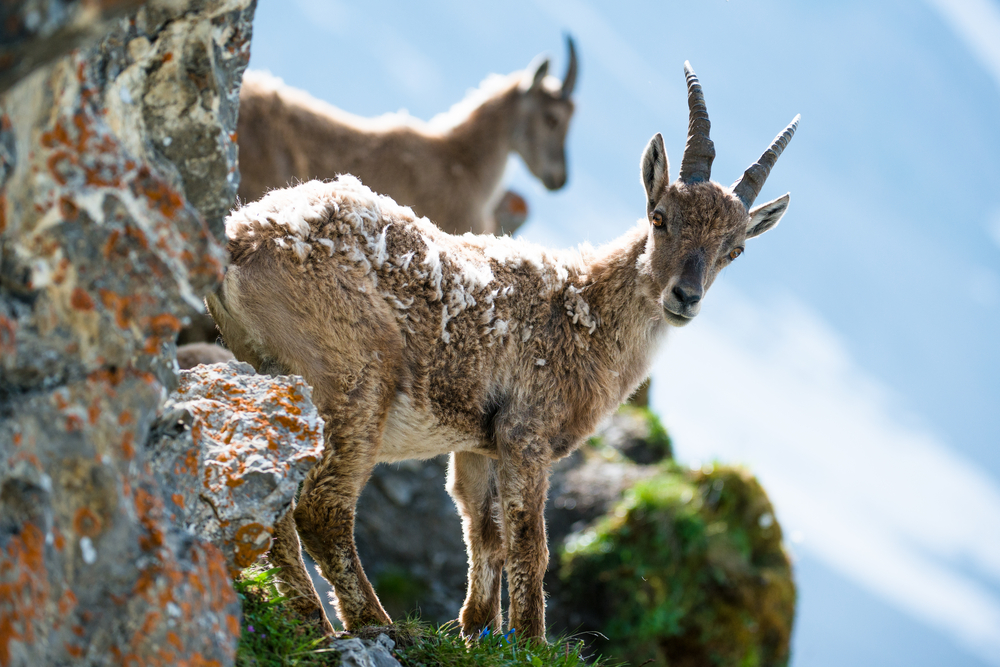Facts About Ibex

Ibex are wild goats that live in the mountainous regions of Europe, north central Asia and northern Africa. There are five species of ibex, according to the Integrated Taxonomic Information System (ITIS). They have long, curved horns and cloven hooves. Males have long beards. Ibex are related to antelopes, buffalo, bison, cattle, goats and sheep.
Size
Ibex are typically about 1 to 5.5 feet (30 to 170 centimeters) from their hooves to withers, the highest part of the shoulders at the base of the neck. Ibex tend to weigh about 65 to 265 lbs. (30 to 120 kilograms).
Both male and female ibex have very long horns, which are used for territorial defense and sexual selection. They curve backward, forming a semicircle, and have knobby rings on the outer curve. Male horns may reach about 5 feet (1.5 m) long.
Diet
Ibex are herbivores; they only eat vegetation, such as shrubs, bushes and grasses. Grazing accounts for a significant part of their eating habits. The low nutritional value of their diet means the ibex must spend much of the day eating.
Habitat
Ibex make their homes on cliffs that would be dangerous for predators. The Walia ibex can live at altitudes as high as 8,200 to 14,800 feet (2,500 to 4,500 m) in the cliffs of the Ethiopian highlands, according to the BBC.
The Nubian ibex has a special way to deal with the hot, dry climates of the African and Arabian mountains: Their shiny coats reflect sunlight and keep them cool.
Ibex are social and live in groups called herds. The herds are segregated by gender, meaning males will have a herd, and the females and offspring will be in another herd. The two herds usually meet only during breeding season.
Get the world’s most fascinating discoveries delivered straight to your inbox.
The male herd is called a bachelor herd. Sometimes, males will wander without a herd. Female herds can have 10 to 20 members.
Offspring
Ibex males use scent to communicate with potential mates. Nubian ibex males use their beards to spread a scent that draws in and excites females during breeding season. Breeding season for ibex is called the rut. During the rut, males fight for the right to breed with the females by pushing their heads together. The winners will court the female in a process that can take around 30 minutes.
Once pregnant, females will have a gestation period of 147 to 180 days. She will give birth to one to three babies, called kids, at a time.
Right after birth, a kid is very alert and can jump around. After four weeks, it is ready to join the other kids in the group. At four to six months, a kid is weaned. It will remain with its mother for at least a year. Females will go on to have their own young at 2 to 6 years of age. The life span of ibex in the wild is about 17 years.
Classification/taxonomy
The taxonomy of ibex, according to the Integrated Taxonomic Information System (ITIS) is:
- Kingdom: Animalia
- Phylum: Chordata
- Subphylum: Vertebrata
- Class: Mammalia
- Order: Artiodactyla
- Family: Bovidae
- Genus: Capra
- Species: Eight species of goat, of which five are ibex: Capra ibex (Alpine ibex), Capra nubiana (Nubian ibex), Capra pyrenaica (Spanish ibex), Capra sibirica (Siberian ibex) andCapra walie (Walia ibex)
Conservation status
Most wild goat species are doing well, but two are facing extinction. The Nubian ibex is considered vulnerable by the International Union for Conservation of Nature because its numbers are decreasing; it is estimated that there are fewer than 10,000 mature individuals. According to the IUCN, the Walia ibex is endangered, with only about 500 of their kind left.
One species, the Pyrenean ibex, was declared extinct in 2000. However, it may not be gone forever. In 2009, Spanish biologists used frozen tissue to clone a Pyrenean ibex. The clone only lived for seven minutes, but scientists are hopeful that this cloned ibex will pave the way for the successful cloning of extinct animals.
Other facts
Ibex are very nimble. They can jump more than 6 feet (1.8 meters) straight up without a running start. This helps them climb mountainous terrain with ease.
Ibex hooves have sharp edges and concave undersides that act like suction cups to help them grip the sides of steep, rocky cliffs. For example, Alpine ibex climb up the side of the Cingino Dam in the Italian Alps to lick salt and lichens from the stones.
People have hunted the ibex for thousands of years. They provided humans with meat to eat and hide to use as clothing. About 8,000 to 10,000 years ago in southwest Asia and the Middle East, humans began domesticating wild goats, according to the San Diego Zoo.
Nina Sen contributed to this article.
Other resources

 Live Science Plus
Live Science Plus






